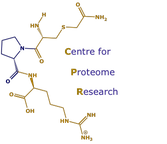Single cell proteomics on macrophages
Harrison Specht, Edward Emmott, Aleksandra A. Petelski, R. Gray Huffman, David H. Perlman, Marco Serra, Peter Kharchenko, Antonius Koller and Nikolai Slavov (2021) Single-cell proteomic and transcriptomic analysis of macrophage heterogeneity using SCoPE2 Genome Biol 22(1):50. doi: 10.1186/s13059-021-02267-5.
Background: Macrophages are innate immune cells with diverse functional and
molecular phenotypes. This diversity is largely unexplored at the level of single-cell
proteomes because of the limitations of quantitative single-cell protein analysis.
Results: To overcome this limitation, we develop SCoPE2, which substantially increases
quantitative accuracy and throughput while lowering cost and hands-on time by
introducing automated and miniaturized sample preparation. These advances enable
us to analyze the emergence of cellular heterogeneity as homogeneous monocytes
differentiate into macrophage-like cells in the absence of polarizing cytokines. SCoPE2
quantifies over 3042 proteins in 1490 single monocytes and macrophages in 10 days of
instrument time, and the quantified proteins allow us to discern single cells by cell
type. Furthermore, the data uncover a continuous gradient of proteome states for the
macrophages, suggesting that macrophage heterogeneity may emerge in the absence
of polarizing cytokines. Parallel measurements of transcripts by 10× Genomics suggest
that our measurements sample 20-fold more protein copies than RNA copies per gene,
and thus, SCoPE2 supports quantification with improved count statistics. This allowed
exploring regulatory interactions, such as interactions between the tumor suppressor
p53, its transcript, and the transcripts of genes regulated by p53.
Conclusions: Even in a homogeneous environment, macrophage proteomes are
heterogeneous. This heterogeneity correlates to the inflammatory axis of classically and
alternatively activated macrophages. Our methodology lays the foundation for
automated and quantitative single-cell analysis of proteins by mass spectrometry and
demonstrates the potential for inferring transcriptional and post-transcriptional
regulation from variability across single cells.
Background: Macrophages are innate immune cells with diverse functional and
molecular phenotypes. This diversity is largely unexplored at the level of single-cell
proteomes because of the limitations of quantitative single-cell protein analysis.
Results: To overcome this limitation, we develop SCoPE2, which substantially increases
quantitative accuracy and throughput while lowering cost and hands-on time by
introducing automated and miniaturized sample preparation. These advances enable
us to analyze the emergence of cellular heterogeneity as homogeneous monocytes
differentiate into macrophage-like cells in the absence of polarizing cytokines. SCoPE2
quantifies over 3042 proteins in 1490 single monocytes and macrophages in 10 days of
instrument time, and the quantified proteins allow us to discern single cells by cell
type. Furthermore, the data uncover a continuous gradient of proteome states for the
macrophages, suggesting that macrophage heterogeneity may emerge in the absence
of polarizing cytokines. Parallel measurements of transcripts by 10× Genomics suggest
that our measurements sample 20-fold more protein copies than RNA copies per gene,
and thus, SCoPE2 supports quantification with improved count statistics. This allowed
exploring regulatory interactions, such as interactions between the tumor suppressor
p53, its transcript, and the transcripts of genes regulated by p53.
Conclusions: Even in a homogeneous environment, macrophage proteomes are
heterogeneous. This heterogeneity correlates to the inflammatory axis of classically and
alternatively activated macrophages. Our methodology lays the foundation for
automated and quantitative single-cell analysis of proteins by mass spectrometry and
demonstrates the potential for inferring transcriptional and post-transcriptional
regulation from variability across single cells.
